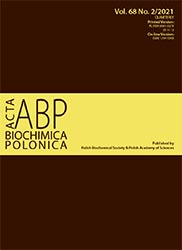Evidence of independent introductions of RHDV2 strains in Poland based on the genome analysis of viral isolates from 2016–2018
Abstract
The aim of this study was the molecular epidemiology of independently introduced RHDV2 strains in Poland. The nucleotide sequences of RHDV2 diagnosed in domestic rabbits in 2018 in the voivodeships of Swietokrzyskie (strain PIN), Malopolskie (strain LIB) and Mazowieckie (strain WAK), and RHDVa from 2015 (strain F77-3) recognized in wild rabbits in Kujawsko-Pomorskie voivodeship were compared to the genome sequences of the first native RHDV2 strains from 2016–2017. The reference sequences available in public databases, the representative for a classical RHDV (G1-G5 genogroups), RHDVa (G6), non-pathogenic caliciviruses (RCV, GI.3 and GI.4) as well as original and recombinant RHDV2 isolates were included for this analysis. Nucleotide sequence similarity among the most distanced RHDV2 strains isolated in Poland in 2018 was from 92.3% to 98.2% in the genome sequence encoding ORF1, ORF2 and 3’UTR, between 94.8–98.7% in the VP60 gene and between 91.3-98.1% in non-structural proteins (NSP) region. The diversity between three RHDV2 and RHDVa from 2015 was up to 16.3% in the VP60 region. Similarities are shown for the VP60 tree within the RHDV2 group, however, the nucleotide analysis of NSP region revealed the differences between older and new native RHDV2 strains. The Polish RHDV2 isolates from 2016-2017 clustered together with RHDV G1/RHDV2 recombinants, first identified in the Iberian Peninsula in 2012, while all strains from 2018 are close to the original RHDV2. The F77-3 strain clustered to well supported RHDVa (G6) genetic group, together with other Polish and European RHDVa isolates. Based on the results of phylogenetic characterization of RHDV2 strains detected in Poland between 2016–2018 and the chronology of their emergence it can be concluded that RHDV2 strains of 2018 and RHDV2 strains of 2016–2017 were introduced independently thus confirming their different origin and simultaneous pathway of spreading.
Acta Biochimica Polonica is an OpenAccess quarterly and publishes four issues a year. All contents are distributed under the Creative Commons Attribution-ShareAlike 4.0 International (CC BY 4.0) license. Everybody may use the content following terms: Attribution — You must give appropriate credit, provide a link to the license, and indicate if changes were made. You may do so in any reasonable manner, but not in any way that suggests the licensor endorses you or your use.
Copyright for all published papers © stays with the authors.
Copyright for the journal: © Polish Biochemical Society.


